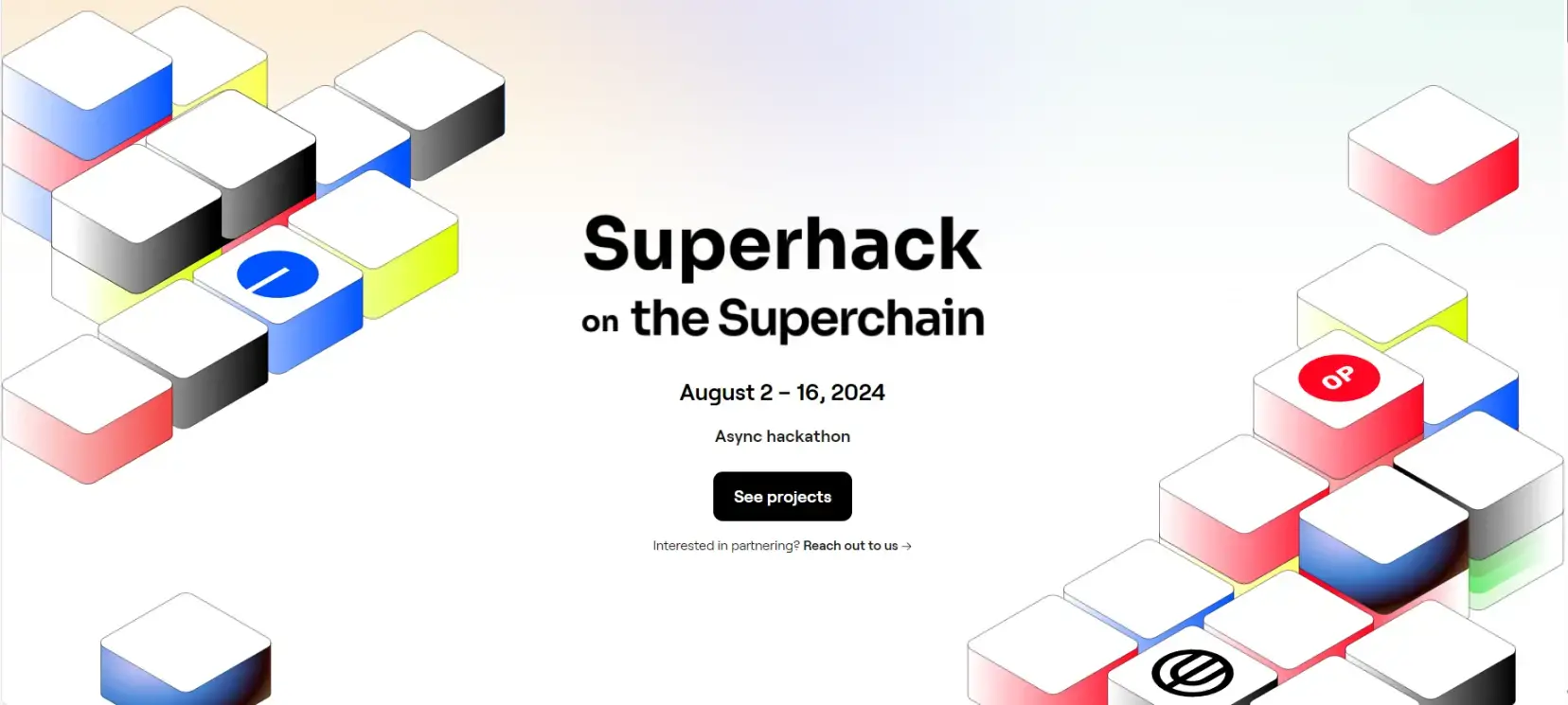A Quick Overview of the 10 Finalist Applications from ETH Global Hackathon
Written by: 0x137, BlockBeats

Yesterday, ETHGlobal announced the 10 shortlisted applications from the ETH New York hackathon, covering various aspects such as gaming, NFTs, wallet security, and social communication. Each project is fun and full of potential. In this article, BlockBeats provides a detailed introduction to the application scenarios and interaction processes of these 10 shortlisted projects.
Guidl
Guidl is a gaming guild management platform designed to help players and guilds share resources within the Web3.0 gaming ecosystem. Through Guidl, players can use other members' game accounts, on-chain assets, and in-game skills, which not only enhances the atmosphere and consensus of the guild, helping new players grow quickly, but also improves the efficiency of resource allocation within the gaming ecosystem, allowing each member to leverage their strengths.
After connecting their wallets, users can start creating guilds on the Guidl platform. Click "Create Guild" to upload the guild logo, name, and description, which will be processed via IPFS. The ownership of the guild can be transferred, and the guild leader can customize the guild's rules, such as asset access control, etc.

Once users have created a guild, they can invite other players to join using their wallet address or ENS domain name. Players receive notifications through the EPNS system and can choose to accept or decline the invitation. If a player clicks "Accept," a soulbound token will be automatically minted, granting access to the guild's resources.

Players can log into on-chain games using the accounts of guild members and utilize members' on-chain assets, while the guild structure based on Gnosis Safes ensures the security of borrowed players' NFTs, allowing each member to fully control their player data.
After entering their guild, users can see other members, games, and on-chain assets within the guild. By clicking "Play" next to the assets, they can directly use their guild friends' accounts and assets to start playing.
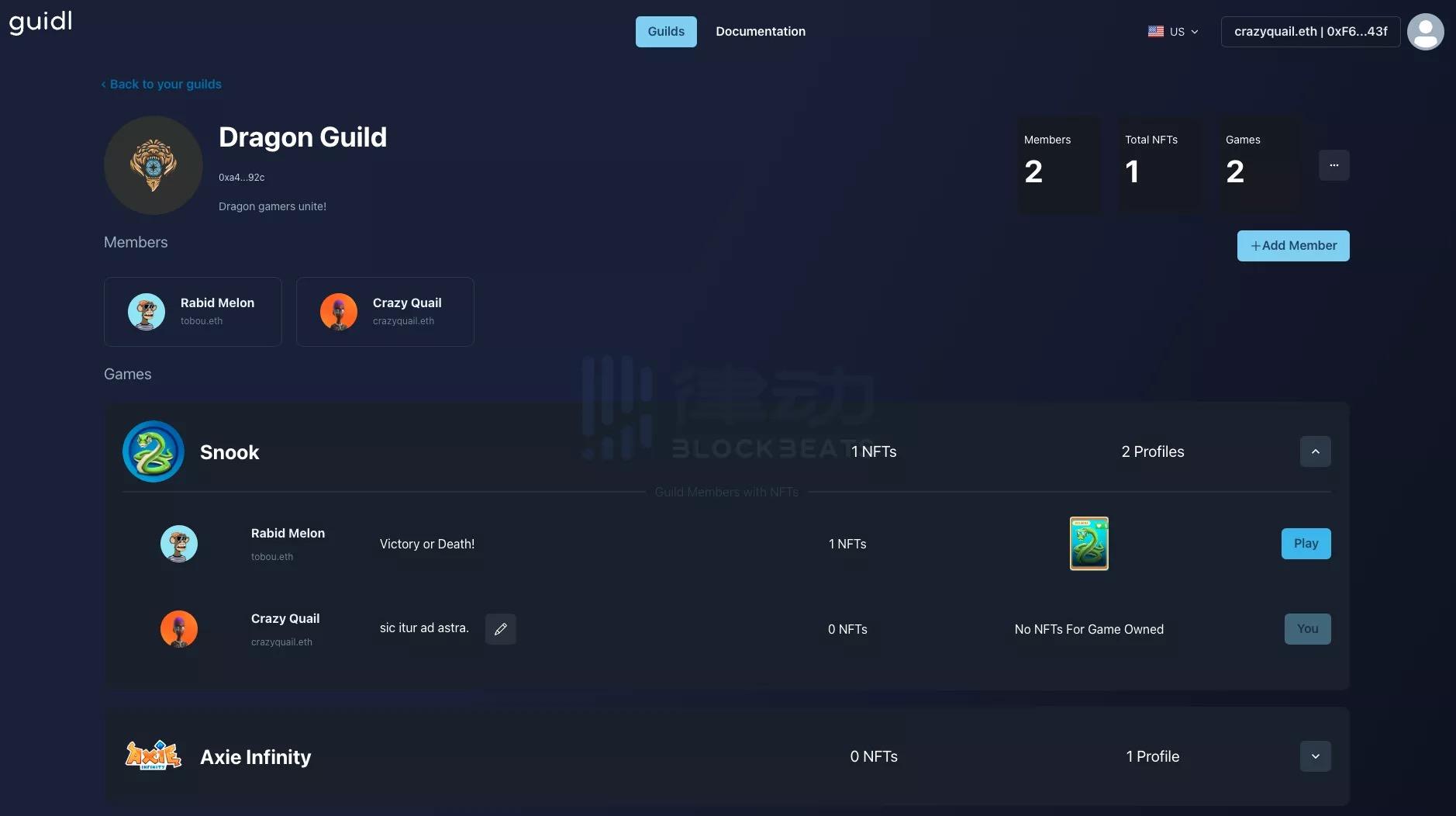
Guilds created on Guidl are not bound to any specific game and are compatible with most games within public chain ecosystems, providing greater flexibility for guild members. The team plans to continue expanding Guidl's cross-chain capabilities and implement more comprehensive asset management, game operation automation, advanced access control for guild members, and tokenization of guild services.
Burn My Wallet
Burn My Wallet is a wallet security marking software developed by former Coinbase developers. It alerts other users and protocols about wallet addresses that have been hacked by minting soulbound tokens, which the team refers to as a "killswitch" for stolen wallets. After a wallet is hacked, users can mint a non-transferable, hacker-proof soulbound token through Burn My Wallet. Other applications and protocols can check whether a wallet address has been hacked by integrating with the API provided by Burn My Wallet. This application currently supports the Ethereum mainnet and Matic network.
After connecting their wallets, users will see a "Burn 0x…" button, which they can click to mint a soulbound token for that wallet address. Once minted, clicking the search button in the top left corner allows users to check the current marking status of the wallet.


After completing the above operations, applications integrated with the Burn My Wallet API will be able to identify that the wallet has been hacked and take appropriate measures. For example, DAO organizations can revoke the voting rights of the wallet, and wallet applications can prevent assets from being sent to the hacked wallet, etc. The following image shows the chat application XMPT that has integrated the API, where the hacked wallet address is marked as "Hacked."

Tsukiji
Tsukiji is an NFT marketplace built on the Seaport protocol created by OpenSea, aimed at improving the NFT order matching process through aggregation and incentive mechanisms. Tsukiji creates a two-sided market for consumers and fulfillers, with a web application for consumers to create and view orders. The Tsukiji API is available for fulfillers and community members, incentivizing them to help match unfulfilled orders.
After connecting their wallets, users can see the NFT orders provided by Tsukiji, and by clicking "Create Listing," they can create their own orders.
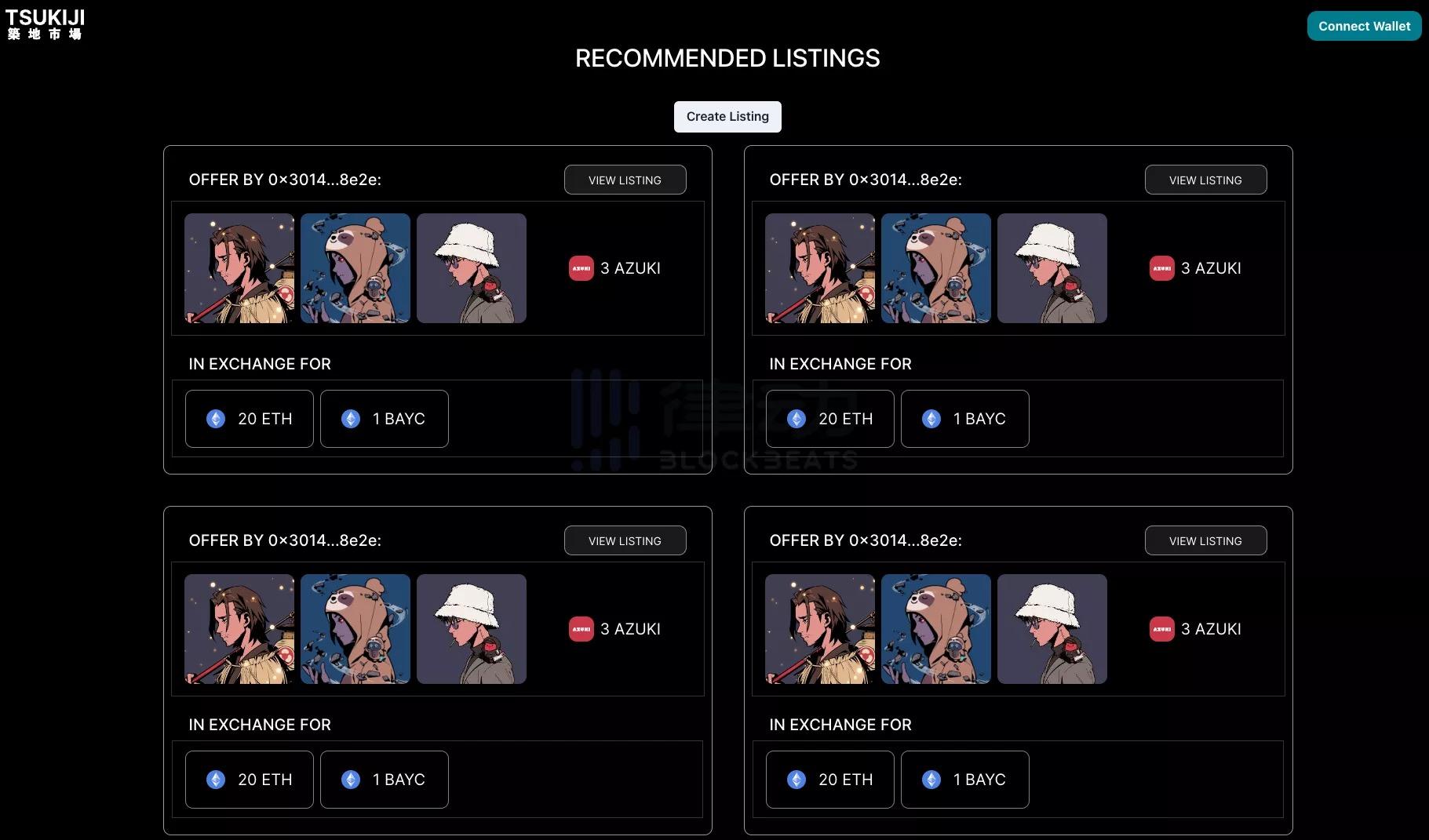
Tsukiji supports the exchange of multiple assets in a single order, which can include Ethereum NFTs or ERC20 tokens. After selecting the trading assets, users can set the duration for the order and attach a tip to incentivize fulfillers to help complete the matching, with fulfillers automatically receiving the tip after the transaction is completed.
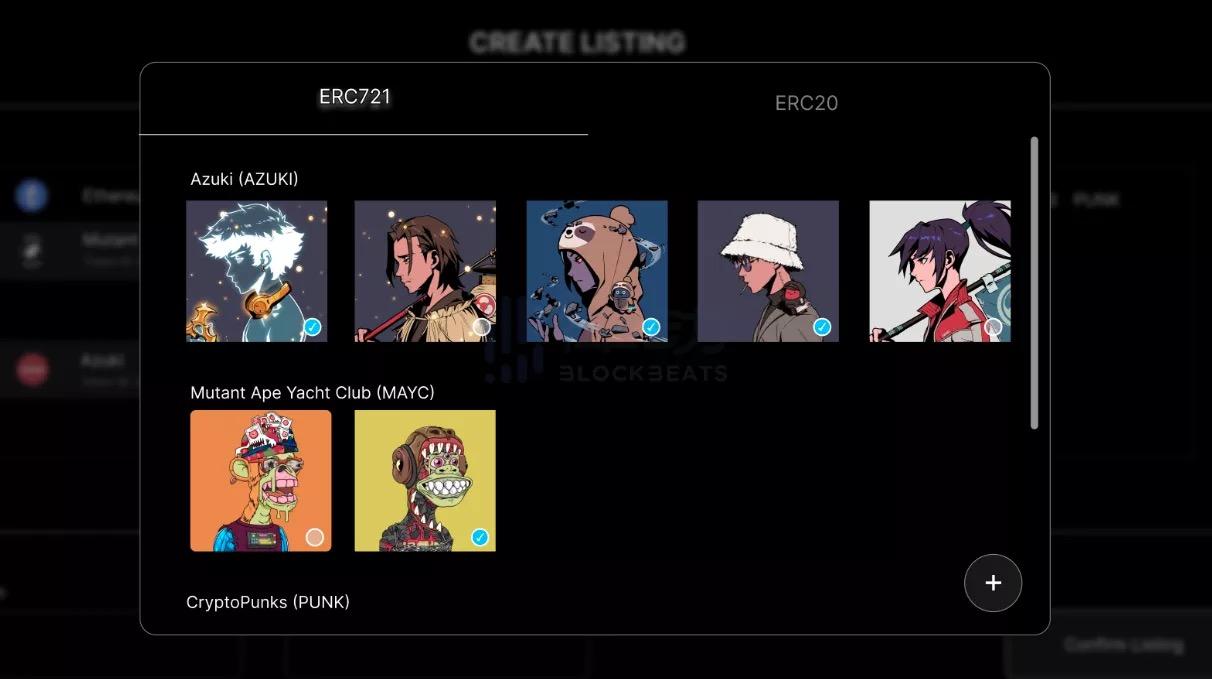
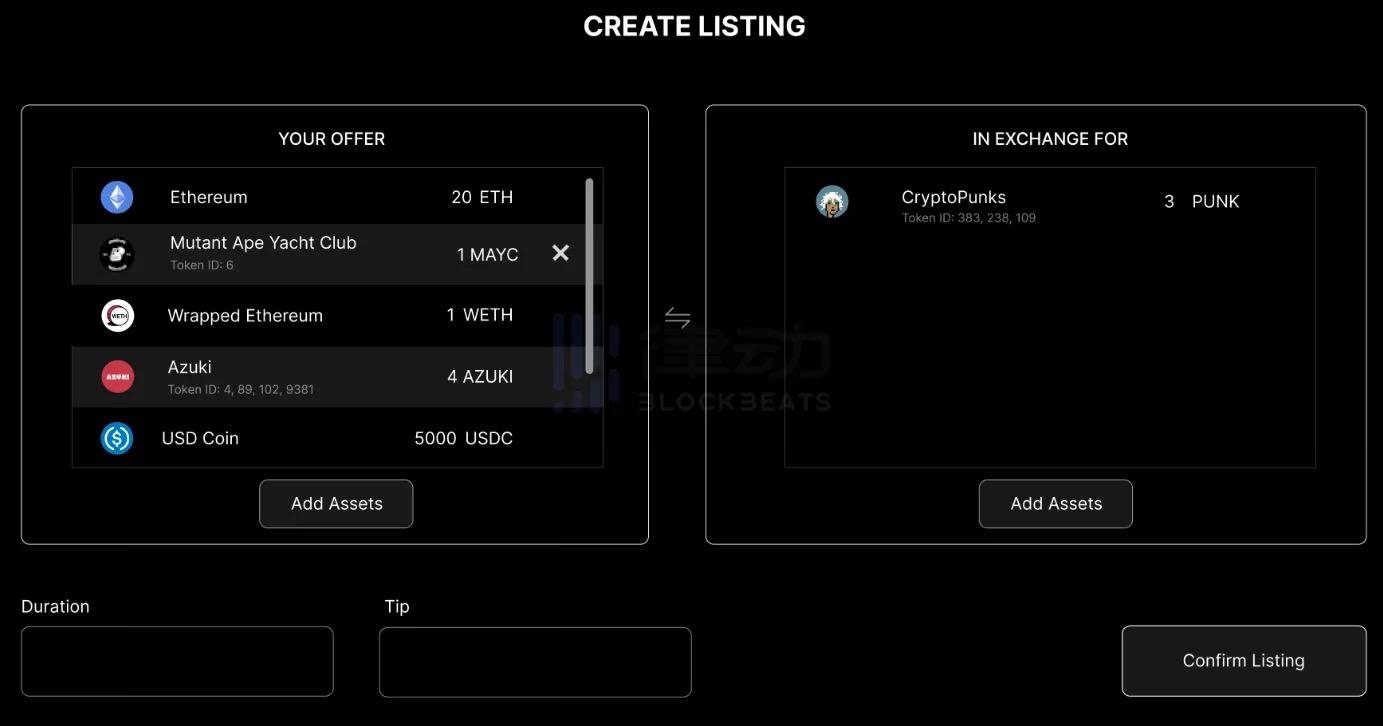
NFT Safe Launch
NFT Safe Launch is an NFT issuance and management application that decentralizes the governance of project roadmaps by extending the mint contracts of NFT projects.
Many NFT projects complete their main sales during the mint phase, with subsequent roadmaps relying on community trust in the team. NFT Safe Launch incorporates snapshot governance voting and triggers it when the team needs to use the project treasury, helping NFT projects establish better accountability and transparency. The project team can only access the project treasury after meeting specific standards or milestones.
After connecting their wallets, users can enter the contract address of the relevant NFT project in the search bar to view various project information, including treasury assets, NFT circulation numbers, project progress, etc. Community members can choose to mint or abandon the project based on their judgment.
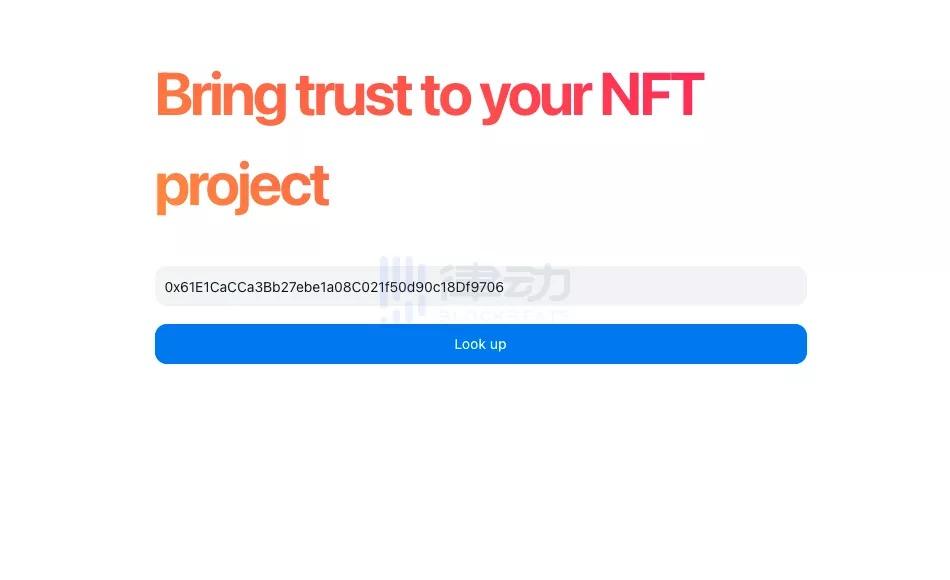

When the project team needs to use the treasury, NFT Safe Launch will automatically trigger governance snapshot voting for NFT holders. If holders disagree with the team's request, they can receive a partial refund of the mint fees.

Pearl
Pearl is a Web3.0 community communication management software designed to help individual users and community administrators create personalized messaging notification systems. A major pain point of commonly used Web3.0 communication software like Discord and Telegram is message overload, making it difficult for many users to filter out important messages from the vast amount of information, leading to decreased community engagement and retention.
Pearl customizes the classification and management of information at both the receiving and sending ends, greatly alleviating the issue of message overload. The platform mainly consists of three core parts: a mobile information receiving application for users to precisely control notification types; an information sending dashboard where community administrators can set and send message notifications after verifying their on-chain identity; and a decentralized wallet-to-wallet communication protocol YAMP (Yet Another Message Protocol) developed by the team to ensure the security and verifiability of information transmission.
First is the mobile app, where users can see their NFT communities after binding their wallets. By clicking on any NFT community, they enter the message management page, where users can select the types of messages they wish to receive. For each NFT project, users can make individual personalized receiving settings.
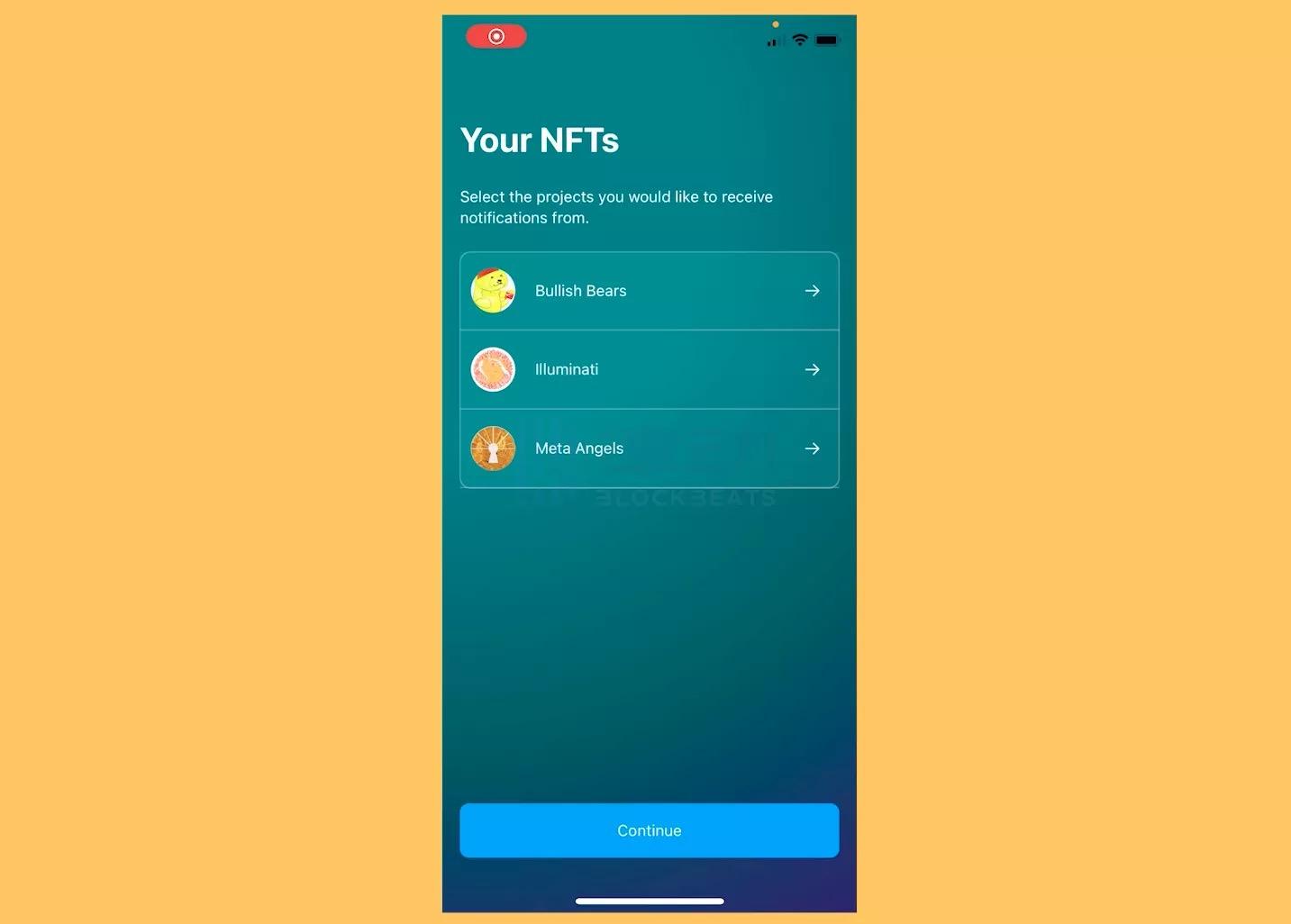

Next is the information sending page, where community administrators can edit the message name, type, and content after connecting their wallets, and send secure messages through the YAMP protocol after completing wallet signing. Users will receive the sent messages in the "Inbox" page of the Pearl mobile app.
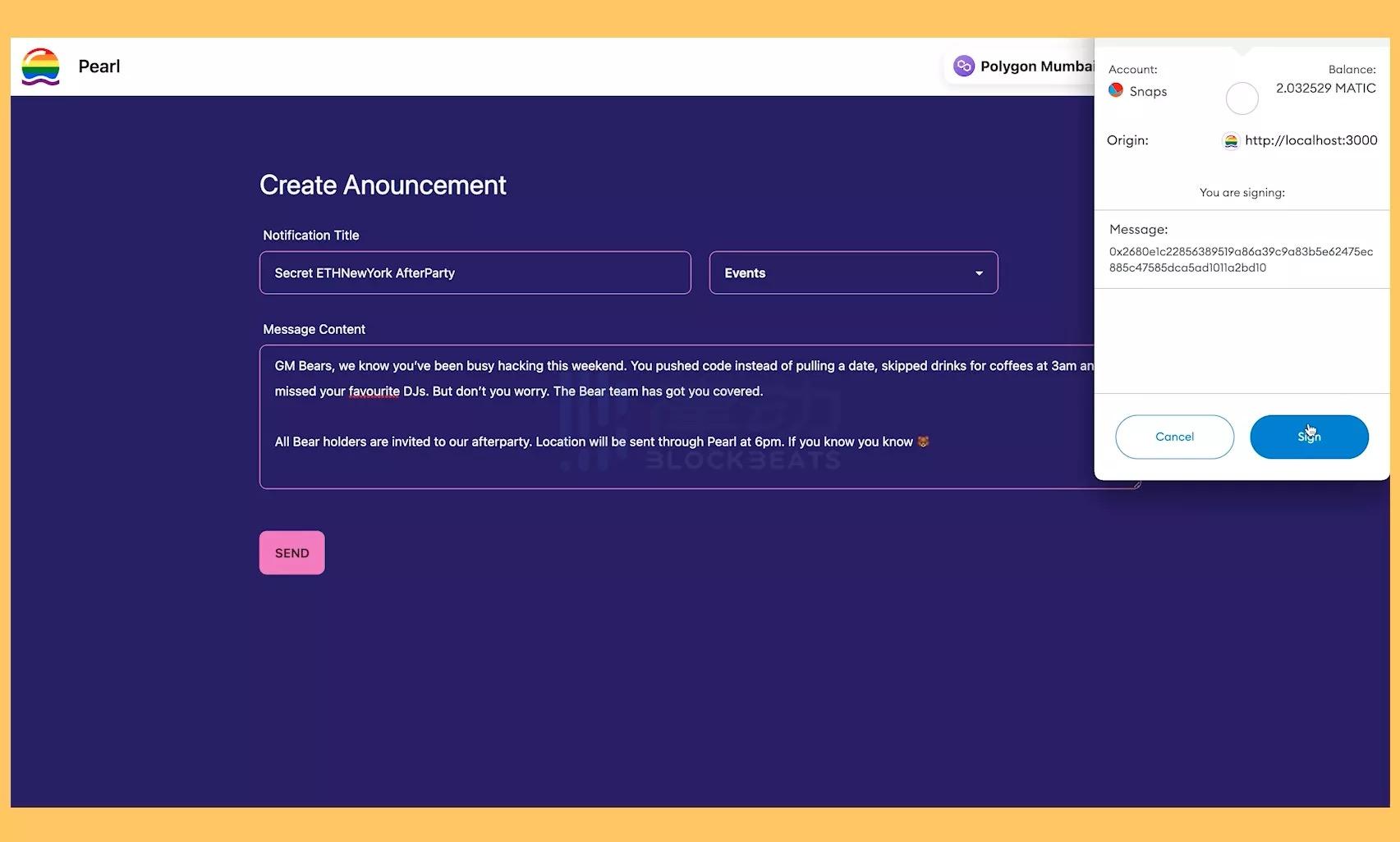

The team plans to add more features to the information sending dashboard, including collaborative editing, scheduled sending, and access permission segmentation.
Steam Tokenizer
Steam Tokenizer is a bridging application for putting digital goods on-chain within the Steam platform, aimed at promoting the development of the current Web3.0 gaming industry by connecting the Steam marketplace and the Ethereum mainnet.
Steam is the largest game distribution and sales platform globally, accounting for 18% of the global PC gaming market. Through Steam Tokenizer, users can send any digital goods to Steam custody, mint corresponding NFTs as endorsements, and trade them on decentralized markets like OpenSea.
Steam Tokenizer is directly embedded in the Steam interaction interface, allowing users to send in-game assets to a trading page hosted by a bot. The bot automatically generates corresponding metadata dynamically and uploads it to IPFS, and users receive a unique link to mint the corresponding NFT. If they need to redeem digital assets, they can simply destroy the NFT to perform the reverse operation.
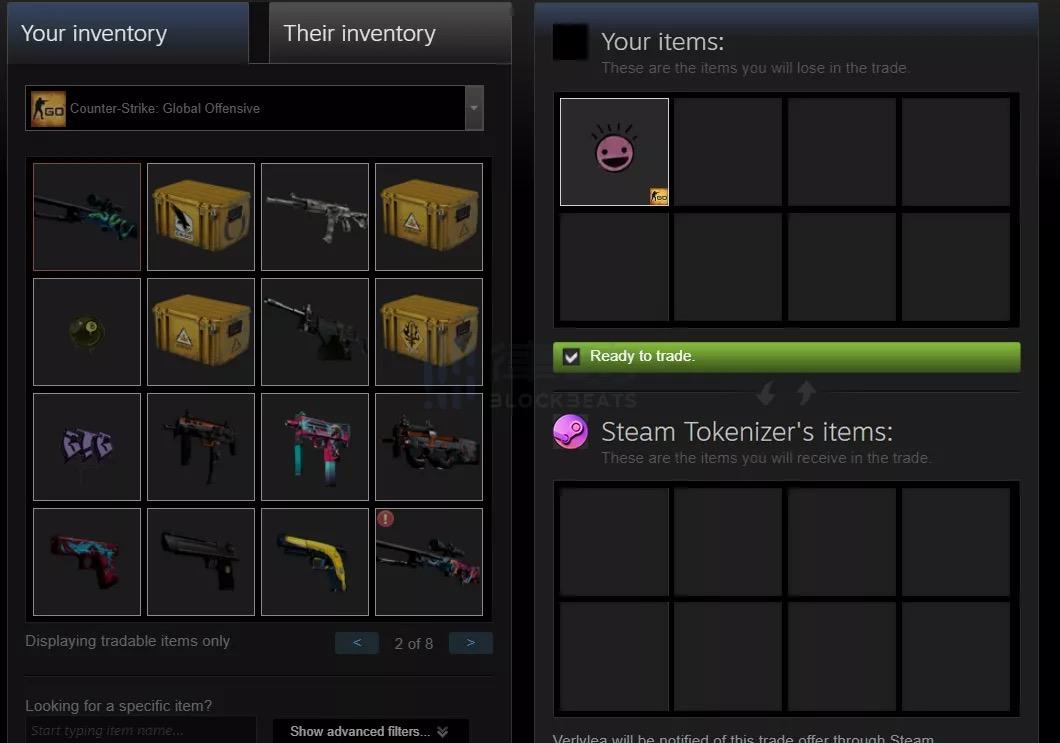
After receiving the link to mint the NFT, users can click to go to the Steam Tokenizer interface for minting. Once minted, the asset will appear in the corresponding NFT collection, and users can view the detailed attribute values of the NFT asset on platforms like OpenSea.
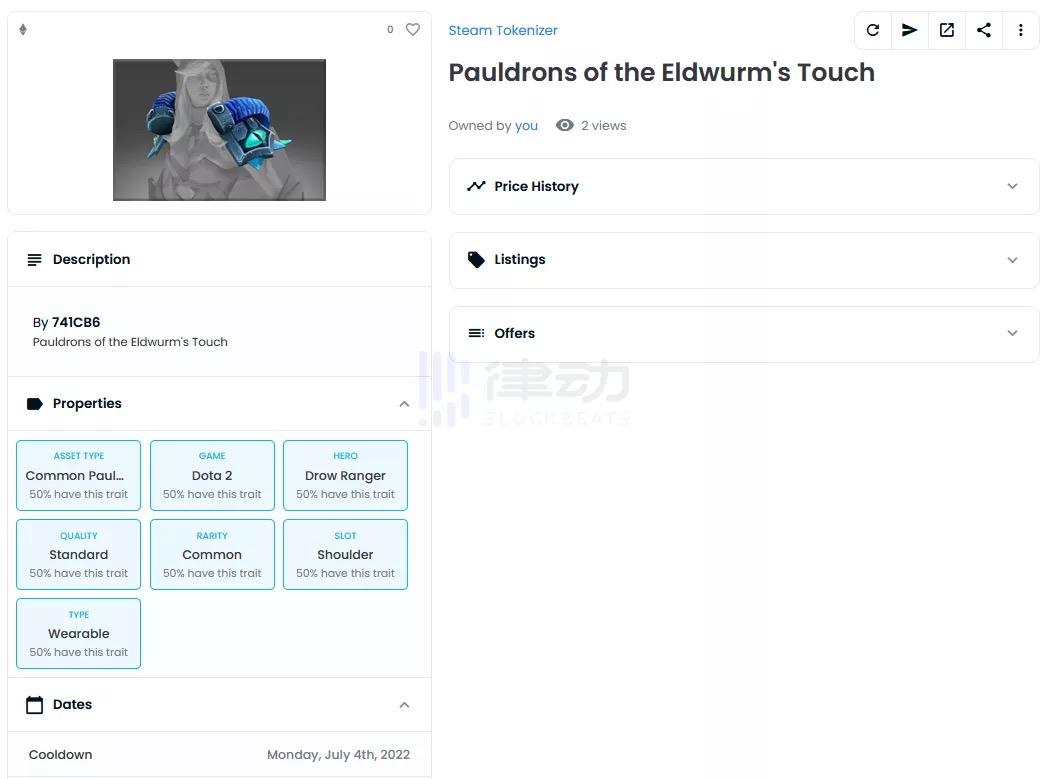
Reverb
Reverb is an integrated on-chain music platform for listening and selling, aimed at bridging the relationship between artists and listeners through economic incentives, supporting the creation of emerging independent artists. Reverb is built on the Lens protocol and uses Livepeer to support audio and other streaming media playback, Tatum and Superfluid to support the creation and distribution of artist tokens, and IPFS for content storage, with the application currently deployed on Polygon Mumbai.
The interaction interface of Reverb is similar to most audio streaming platforms, including new content discovery, style categorization, and artist albums. On personal pages, users can see the art albums they have collected and artist tokens.

After purchasing an artist's NFT, listeners automatically gain the qualification to earn that artist's tokens. By listening to and sharing the artist's music, listeners can accumulate tokens from various artists and can purchase various collectibles from the artist, such as merchandise, early access rights, and concert tickets.

MeshLink
MeshLink is a decentralized analytics platform focused on on-chain data analysis models for applications, aimed at providing developers with convenient and reliable user data analysis pathways. Currently, Web3.0 application developers lack analytical data on users, yet this aspect is crucial for application development and iteration, which is the problem MeshLink addresses.
After logging into MeshLink, users can associate a specified contract address with a specified application, and the system will automatically fetch all relevant information for later retrieval. The data stored in the system can be used for group analysis, user retention testing, and user group correlation testing between applications, etc.
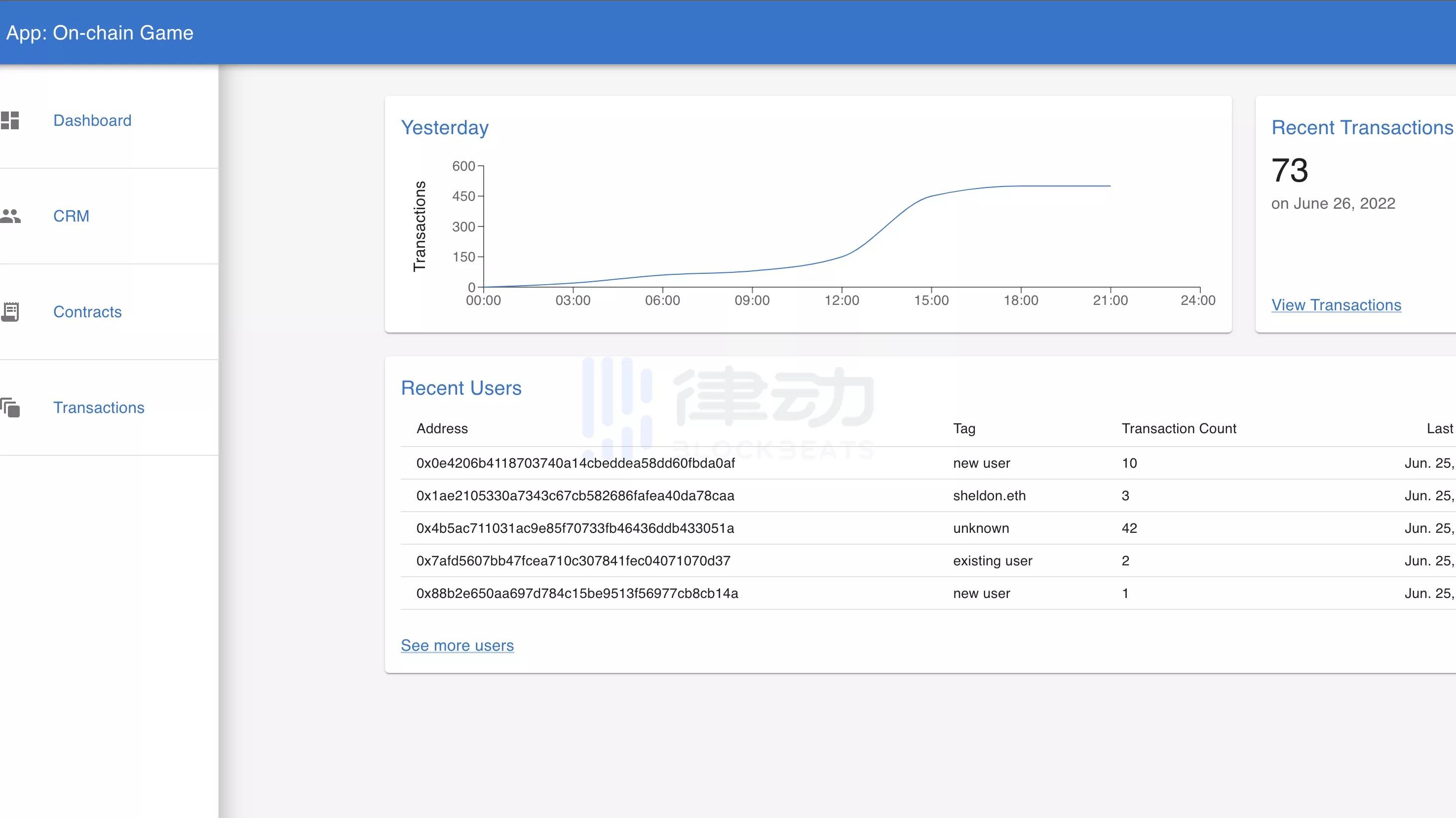
SafeNode
SafeNode is a user-centric anti-fraud RPC firewall designed to protect blockchain users' asset security. Through mechanisms such as proxy transactions, simulated results, and contract blacklists, SafeNode can significantly reduce the likelihood of users losing digital assets in various scams, such as Discord phishing links and Ponzi schemes. Currently, SafeNode is applicable to all EVM-compatible public chains.
SafeNode has a global whitelist contract and address list, including OpenSea, Uniswap, Curve, etc. After users add SafeNode's test URL in their MetaMask settings, verified and reliable contract addresses will be automatically added to their personal whitelist, allowing users to interact with these contract addresses without any difference from previous operations.
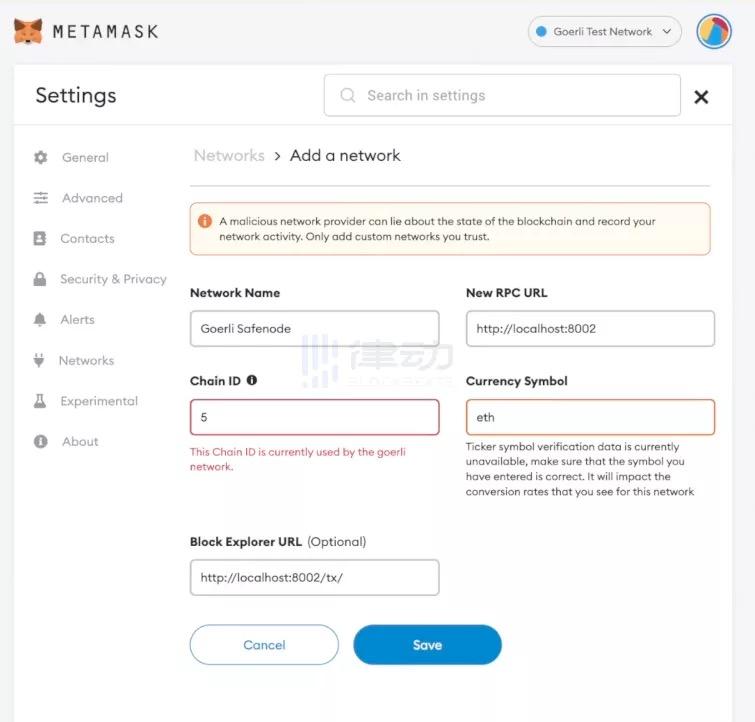
When a user submits a transaction, SafeNode automatically proxies it and sends it to the memory pool, waiting for the user's further approval. At this point, SafeNode provides the user with simulated data for the transaction, including approvals and transfers of ERC20/721 assets, to assist the user in making a secondary decision, similar to Etherscan before a transaction occurs.
Transaction simulation is the main mechanism by which SafeNode ensures user safety.
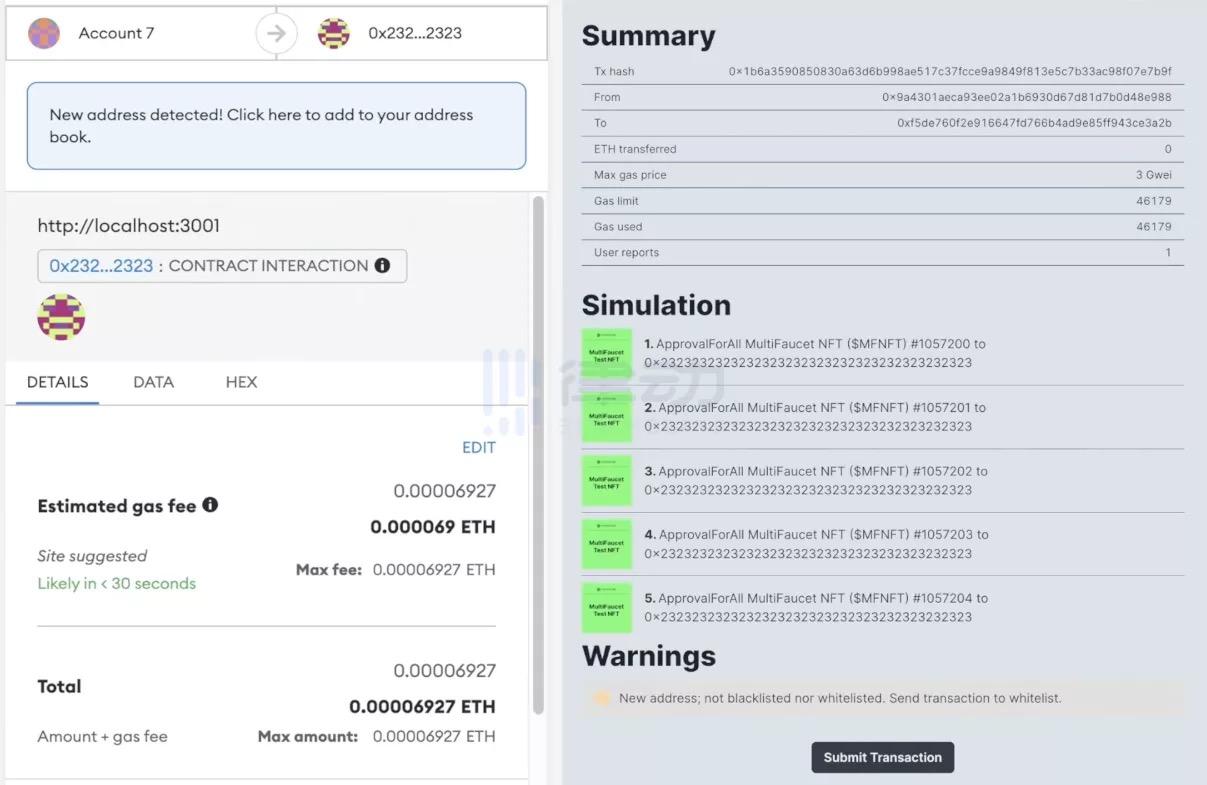
Another layer of protection provided by SafeNode is to prevent users from transacting with blacklisted addresses. This mechanism is combined with Worldcoin's World ID user reporting, allowing users to report high-risk contract addresses through the "Report Address" feature. If a contract address receives hundreds of reports, it is highly likely to be a scam. SafeNode's profit model is similar to the SSL certificate industry, adding audited contracts' security and fair claims to the trusted contract list of applications.
In addition, SafeNode can also detect whether tokens sent to contracts can be reclaimed; if they cannot be reclaimed, SafeNode will not execute the transaction. This blacklist can also be used to prevent interactions with addresses on known malicious user lists.

ETHDos
ETHDos is an interesting social experiment based on the recursive Zk Snarks composability, aimed at hiding personal social graphs while measuring the relational distance between individuals, similar to the six degrees of separation theory.

ETHDos starts with a central figure, who first sends a relationship proof in the form of Zk Snark to their closest friends. Friends who receive the proof link can also use their own ENS domain names to provide relationship proof and propagate the chain, ultimately allowing users to prove their exact relational distance to the central figure.
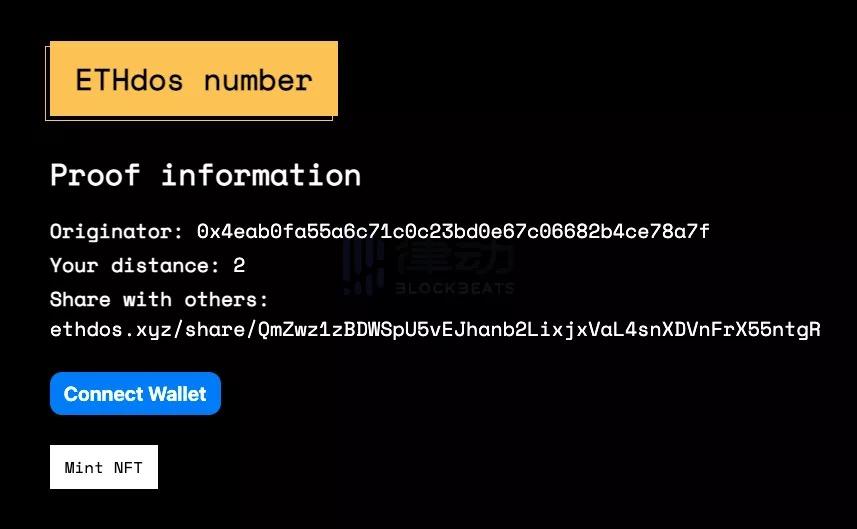
It is worth noting that users cannot determine the detailed pathways to contact the central figure, allowing celebrities to disclose limited information about their social graphs while other users can prove their relationships with them, even minting NFTs as proof through ETHDos.








